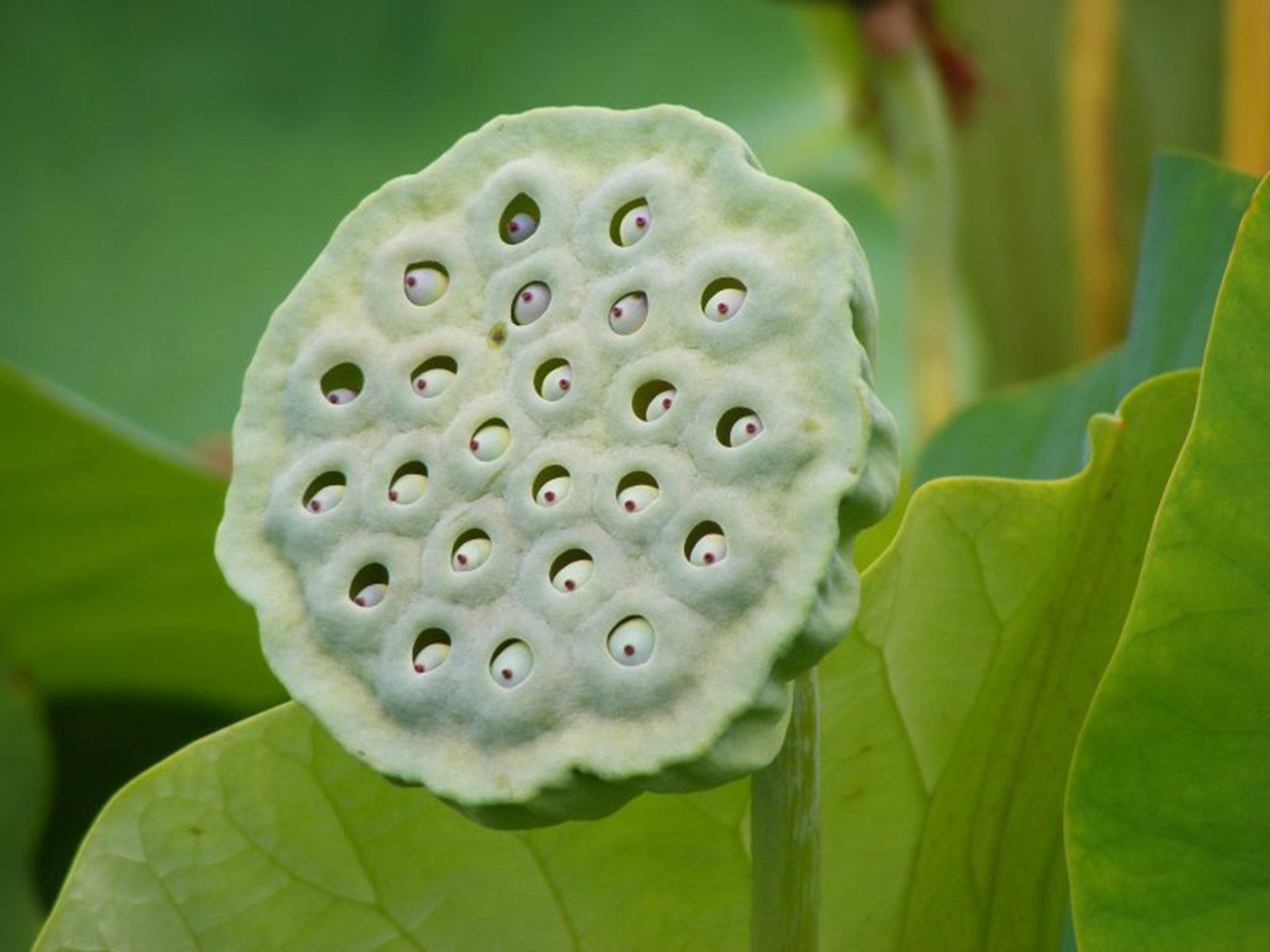Science explains why this image disgusts some people
The disgust we feel is an evolutionary advantage, even if we don't know it consciously

Does the lotus fruit image above make your skin crawl?
Up to 16 per cent of people (18 per cent of females and 11 per cent of males) become viscerally upset after looking at images of clustered holes, according to the first-ever study on the condition known as trypophobia. These clusters of holes are common in nature, such as in honeycombs and groups of soap bubbles.
One sufferer reports: "[I] can’t really face small, irregularly or asymmetrically placed holes, they make me like, throw up in my mouth, cry a little bit, and shake all over, deeply."
It turns out this strange revulsion could be rooted in biology, according to the study by researchers Geoff Cole and Arnold Wilkins, of Essex University.
"There may be an ancient evolutionary part of the brain telling people that they are looking at a poisonous animal," Dr Cole said. The disgust we feel is an evolutionary advantage, even if we don't know it consciously, because it sends people with trypophobia running as far as possible from the holey thing.
10 Deadliest Animals In The World
Show all 10To identify this effect, the researchers analyzed images found on trypophobia websites and images of holes that don't trigger trypophobia, looking for differences.
Then, when one of the patients they interviewed mentioned that they also had a fear of the pattern on the poisonous blue-ringed octopus they had what Dr Cole calls a "bit of a eureka moment".
They collected 10 images of the top 10 poisonous species to show to their trypophobia patients. The species they selected were: the blue-ringed octopus, the box jellyfish, the Brazilian wandering spider, the deathstalker scorpion, the inland taipan snake, the king cobra snake, the marbled cone snail, the poison dart frog, the puffer fish, and the stonefish.
Here are a few images of these species:
Any of them give you the willies? The researchers, who published their findings in the journal Psychological Science, found that these poisonous species sometimes have similar, creep-inducing patterns that revolt trypophobes.
"We think that everyone has trypophobic tendencies even though they may not be aware of it," Dr Cole said. "We found that people who don’t have the phobia still rate trypophobic images as less comfortable to look at than other images."
Read more:
• Barack Obama says Britain is a 'free rider'
• These tweets nail the absurdity of many tech offices
• 4 reasons why the Irish economy killed it in 2015
Read the original article on Business Insider UK. © 2015. Follow Business Insider UK on Twitter.
Subscribe to Independent Premium to bookmark this article
Want to bookmark your favourite articles and stories to read or reference later? Start your Independent Premium subscription today.

Join our commenting forum
Join thought-provoking conversations, follow other Independent readers and see their replies